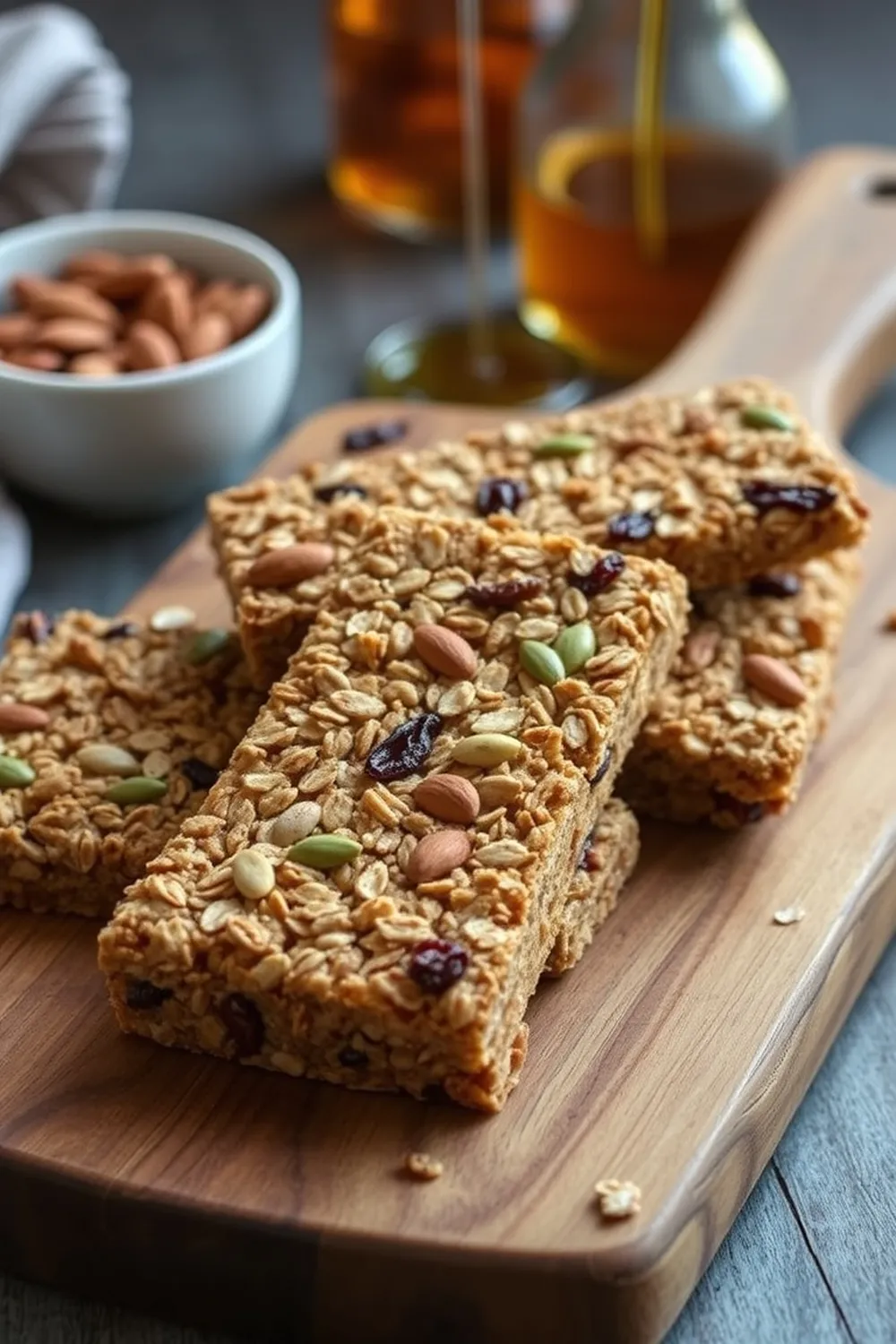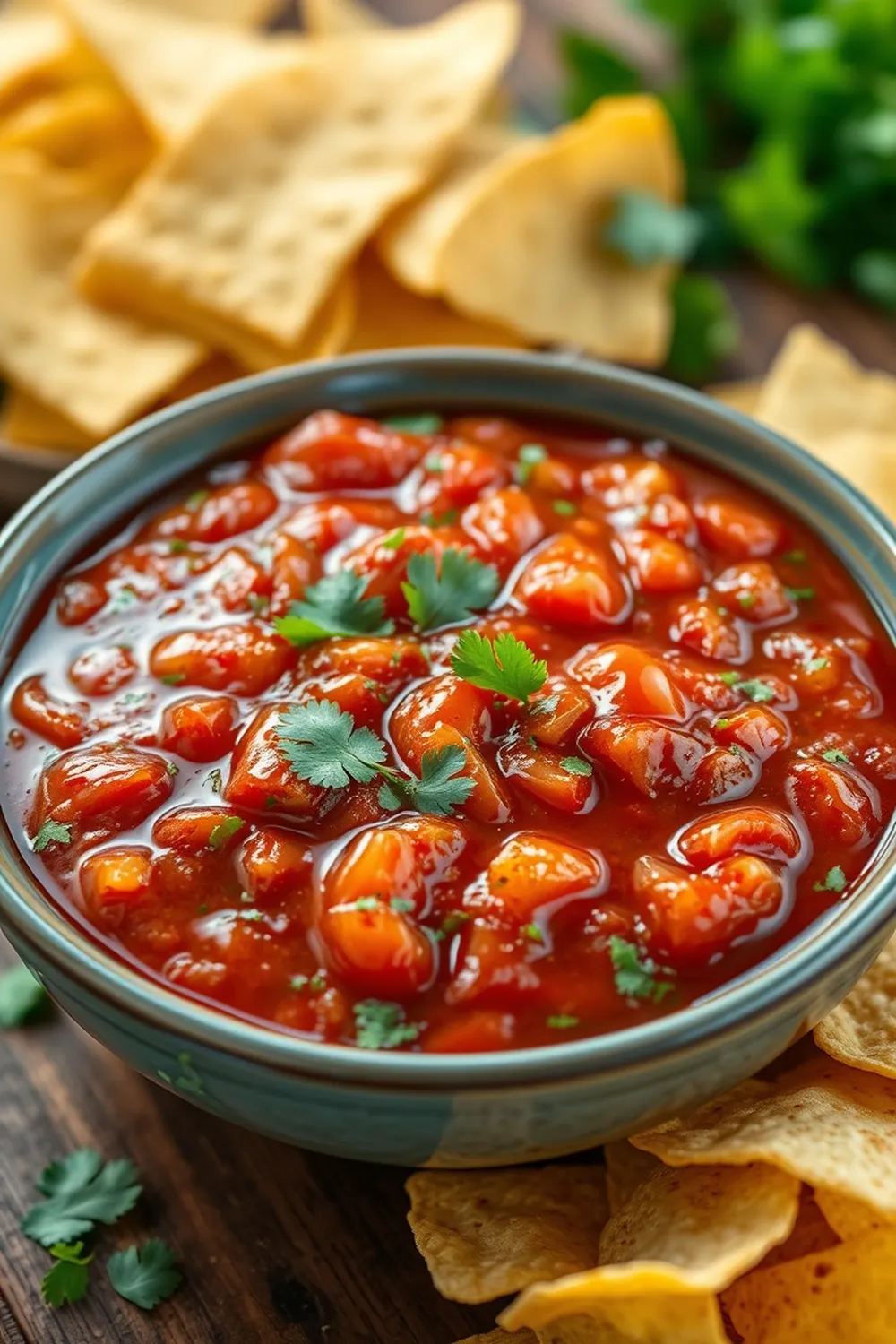- Soak basmati rice for 30 minutes. Pressure cook vegetable strips separately.
- Boil 6 cups of water with cloves, cardamom, and salt. Add drained rice and cook for 5-7 minutes. Drain and cool.
- Sprinkle yellow food color diluted in water over rice. Mix gently to create a yellow-white contrast.
- Sauté onions for the gravy, then blend with tomatoes, ginger-garlic paste, and green chilies into a smooth paste.
- Heat oil in a kadai. Add whole spices, then the tomato-onion paste. Cook until thickened.
- Add red chili, turmeric, coriander, and garam masala powders. Sauté until aromatic.
- Pour ½ cup of water into the gravy and simmer until oil separates.
- Sauté capsicum and green chilies in oil. Mix into the colored rice.
- Layer a microwavable bowl: oil, rice, gravy, rice. Microwave for 2 minutes.
- Top with crispy vegetable strips and serve with french fries/veggie burger.
- Calories:550 kcal25%
- Energy:2301 kJ22%
- Protein:15 g28%
- Carbohydrates:75 mg40%
- Sugar:10 mg8%
- Salt:600 g25%
- Fat:20 g20%
Last Updated on 2 months by Neha Deshmukh
Biryani Recipe – Vegetable & Rice with Spiced Gravy & Veg Strips
Hey everyone! If you’re anything like me, the word “biryani” instantly makes your mouth water. It’s the celebratory dish in so many Indian households, and for good reason. Today, I’m sharing my go-to vegetable biryani recipe – a flavorful, aromatic delight that’s surprisingly achievable at home. I first made this for a friend’s birthday, and it was a huge hit! Let’s get cooking.
Why You’ll Love This Recipe
This vegetable biryani isn’t just about amazing taste; it’s about the experience. The fluffy rice, the rich gravy, the crispy vegetable strips… it’s a symphony of textures and flavors. It’s perfect for a weekend treat, a festive gathering, or honestly, just when you’re craving something truly special. Plus, it’s a great way to get your veggies in!
Ingredients
Here’s what you’ll need to create this biryani magic:
- 1 cup basmati rice
- 1 tsp cooking oil
- As needed salt
- 6 cups water
- 4 cloves
- 2 green cardamom
- 2 tbsp cooking oil (for gravy)
- 1 green cardamom (for gravy)
- 2 cloves (for gravy)
- 1 large onion
- 2 tomatoes
- 1 tbsp ginger-garlic paste
- 1-2 green chillies
- ¾ tsp red chilli powder
- ¼ tsp turmeric powder
- 1.25 tsp coriander powder
- ¼ tsp garam masala
- 2 pinches yellow food color
- 2 tbsp chopped green capsicum
- 1 finely chopped green chilli
Ingredient Notes
Let’s talk ingredients – a few little things can make a big difference!
- Basmati Rice Quality: Seriously, splurge a little on good quality basmati rice. It makes all the difference in the fluffiness. Look for aged basmati; it tends to be less sticky. (Around 200g if you prefer metric!)
- Spice Blend Importance: Don’t skimp on the spices! Freshly ground spices are best, but good quality pre-ground will work too. The combination of cloves, cardamom, and garam masala is what gives biryani its signature aroma.
- Regional Variations in Gravy: Gravy recipes vary wildly across India. Some use yogurt, others coconut milk. This one is a classic North Indian style, focusing on tomatoes and onions.
- Use of Food Coloring: Okay, the yellow food color is optional! It’s purely for aesthetics, to get that beautiful yellow-white rice contrast. If you prefer to avoid it, feel free to skip it. A pinch of turmeric can give a subtle hue.
Step-By-Step Instructions
Alright, let’s get down to business!
- First, soak your basmati rice in water for about 30 minutes. This helps it cook up nice and fluffy.
- While the rice is soaking, pressure cook the vegetables for the veg strips separately until they are tender-crisp. Set aside.
- In a large pot, bring 6 cups of water to a boil. Add the cloves, cardamom, and a generous pinch of salt.
- Drain the soaked rice and gently add it to the boiling water. Cook for 5-7 minutes, until about 80% cooked. It should still have a slight bite. Drain the rice and spread it out on a tray to cool completely.
- Now, for the color! Dilute a couple of pinches of yellow food color in a little water and sprinkle it over the cooled rice. Gently mix to create that lovely yellow-white contrast.
- Time for the gravy! Heat 2 tbsp of oil in a kadai (a deep frying pan) or a large pot. Sauté the chopped onions until golden brown.
- Blend the sautéed onions with the tomatoes, ginger-garlic paste, and green chillies into a smooth paste.
- Add the tomato-onion paste to the hot oil. Cook until it thickens and the oil starts to separate from the sides. This takes patience, but it’s worth it!
- Add the red chilli powder, turmeric powder, coriander powder, and garam masala. Sauté for another minute or two until fragrant.
- Pour in about ½ cup of water and simmer the gravy until the oil separates again. This is key to a rich, flavorful gravy.
- In a separate pan, sauté the chopped capsicum and finely chopped green chilli in a little oil until slightly softened. Mix this into the colored rice.
- Now for the layering! In a microwave-safe bowl, spread a little oil at the bottom. Layer with about ¼ cup rice, then a generous spoonful of gravy, then another ¼ cup rice. Repeat the layers.
- Microwave for 2 minutes.
- Top with the crispy veg strips and serve immediately! French fries or a veggie burger on the side are highly recommended.
Expert Tips
- Don’t Overcook the Rice: Slightly undercooked rice is better than mushy rice. It will finish cooking in the gravy.
- Patience with the Gravy: The key to a good biryani gravy is slow cooking. Don’t rush it!
- Adjust Salt: Taste as you go and adjust the salt accordingly.
Variations
Let’s get creative!
- Vegan Adaptation: Easily made vegan by ensuring your oil is plant-based.
- Spice Level Adjustment: If you’re sensitive to spice, reduce the number of green chillies and red chilli powder. For a spicier kick, add a pinch of cayenne pepper. My friend, Priya, loves to add a dash of Kashmiri chilli powder for color and mild heat.
- Festival Adaptations: During Eid, my family adds fried onions and chopped mint and coriander to the biryani. For Diwali, we sometimes include paneer (Indian cheese).
- Gluten-Free Considerations: This recipe is naturally gluten-free!
Serving Suggestions
Biryani is a star on its own, but here are a few sides that complement it beautifully:
- Raita (yogurt dip)
- Mirchi ka Salan (chilli curry)
- French Fries
- Veggie Burger
Storage Instructions
Leftover biryani can be stored in an airtight container in the refrigerator for up to 2 days. Reheat gently in the microwave or on the stovetop.
FAQs
Let’s tackle some common questions:
- What type of rice is best for biryani? Basmati rice is the gold standard! Its long grains and delicate flavor are perfect.
- Can I make the gravy ahead of time? Absolutely! The gravy can be made a day in advance and stored in the refrigerator.
- How do I achieve the perfect rice-to-gravy ratio? This comes with practice, but a good starting point is a 1:1 ratio. You want enough gravy to coat the rice, but not so much that it’s swimming in it.
- What are some good side dishes to serve with this biryani? Raita is a classic, but French fries and a simple salad also work well.
- Can this biryani be made in a pot instead of a pressure cooker/microwave? Yes! You can cook the rice in a pot, but it will take longer and require more attention to prevent sticking. Layering and heating in a pot on the stove is also possible, just ensure it’s heated through.
Enjoy your homemade biryani! I hope this recipe brings as much joy to your table as it does to mine. Let me know in the comments how it turns out!










